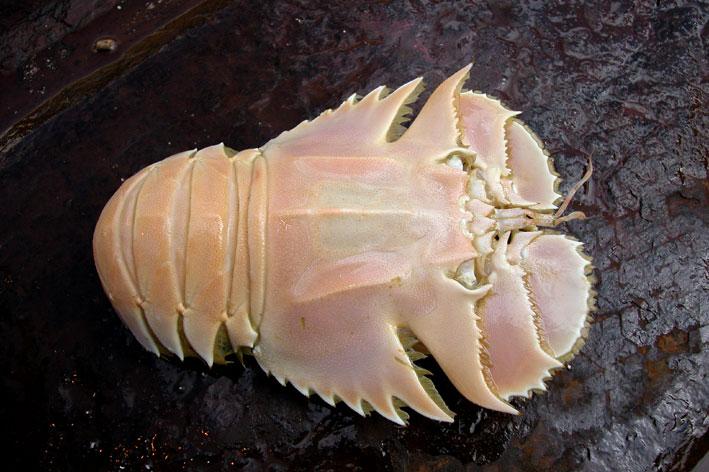
Shovel Nosed Lobster
Slipper (Shovel Nosed Lobster) lobsters have six segments in their heads and eight segments in the thorax, which are collectively covered in a thick carapace. The six segments of the abdomen each bear a pair of pleopods, while the thoracic appendages are either walking legs or maxillipeds. The head segments bear various mouthparts and two pairs of antennae. The first antennae, or antennules, are held on a long flexible stalk, and are used for sensing the environment. The second antennae are the Shovel Nosed Lobster’ most conspicuous feature, as they are expanded and flattened into large plates that extend horizontally forward from the animal’s head.
There is considerable variation in size among species of Shovel Nosed Lobster. The Mediterranean species Scyllarus pygmaeus is the smallest, growing to a maximum total length of 55 millimetres (2.2 in), and rarely more than 40 mm (1.6 in). The largest species, Scyllarides haanii, may reach 50 centimetres (20 in) long.
Shovel Nosed Lobster Common Names
A number of common names have been applied to the family Scyllaridae. The most common of these is “slipper lobster”, followed by “shovel-nosed lobster” and “locust lobster”. “Spanish lobster” is used for members of the genus Arctides, ”mitten lobster” for Parribacus, and “fan lobster” for Evibacus and Ibacus. In Australia, a number of species are called “bugs” (for example, the Balmain bug and Moreton Bay bug), especially those in the genus Ibacus. Other names used in Australia include “bay lobster”, “blind lobster”, “flapjack”, “flat lobster”, “flying saucer”, “gulf lobster”, “mudbug”, “sandbug”, “shovel-nose bug”, “shovelnose lobster”, “slipper bug” and “squagga”. Rarer terms include “flathead lobster” (for Thenus orientalis) and “bulldozer lobster”.
The fossil record of Shovel Nosed Lobster extends back 100–120 million years, which is considerably less than that of slipper lobsters’ closest relatives, the spiny lobsters.







